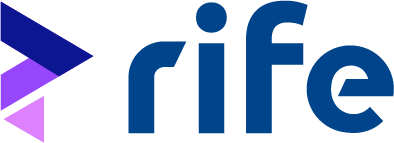
Client: A leading bank in Germany
Project duration: 1 year
People involved: More than 100 employees, 35 of them Sollers
Special features: 100% agile and 100% remote
Digital bancassurance is a new bearer of hope, both for banks and insurers. A German bank is bringing insurance and banking logic together in a project with the help of RIFE.
Digitizing insurance and banking seems like a simple matter to industry outsiders. After all, both industries deal in virtual products. What could be more obvious than digitizing one like the other? However, the reality makes companies face significant challenges in making this happen technically.
One German bank had a competitive insurance model that worked well. However, they became increasingly aware that it had some gaps. Still, they did not yet have the answers to close them. Insurance brokerage is an important add-on business for the bank. However, it was not sufficiently supported on the IT side until now. Changes had to be made simultaneously in three or four systems. This meant waiting in four separate channels until the IT department had resources to process the changes. As each of these systems was not geared towards insurance, compromises had to be made.
Heavy dependence on the core banking system
According to Jarosław Bucon, Chief Customer Officer at Sollers Consulting, lack of flexibility is one of the biggest challenges that banks and insurers face. “We often see how difficult it is for companies to adapt to the market because their IT tools prevent change,” he reported. In the case of this bank, heavy reliance on the core banking system meant that flexibility in the insurance business suffered and time-to-market was slower than they would desire. It was clear from the beginning that a renewal in the old IT landscape would not be possible.
Most solutions that have something to do with insurance are aimed exclusively at insurers. However, the needs of a bank are different. The bank decided to implement RIFE as the platform specializes in bancassurance. The target group of the RIFE system is banks, retailers or, more generally, any company that sells insurance but is not an insurer.
One of the biggest challenges of the project was the IT architecture in banking. “The project was very results-oriented,” says Anna Szczygielska, Senior Consultant at Sollers. “To achieve the goals in practice, we had to reorganize the entire banking architecture.” This was the origin of a sub-project. Insurance and banking logic were decoupled and all insurance logic was centralized in RIFE. This was one of the crucial points to gain more flexibility and speed in implementing product changes.
Insurers and banks become more agile
The implementation is the bank’s first fully agile project. Agile has helped manage the challenges of the lockdown. “We had to find a way to deal with the “unknown unknown”,” notes Szczygielska, senior consultant at Sollers. The team-centric approach is one of the key success factors. “We work as a team, with professionals from both companies collaborating on a daily basis,” Bucon reports. This makes it possible to take the best from both sides, the bank and Sollers Consulting, and combine knowledge and experience, he says. The project was carried out entirely remotely. In the first phase, the entire product portfolio was implemented, both as individual products and in bundles. In the (current?) second phase of the project, the bank is preparing the integrations. The new system is to be rolled out at the end of the year.
Learn more about the system